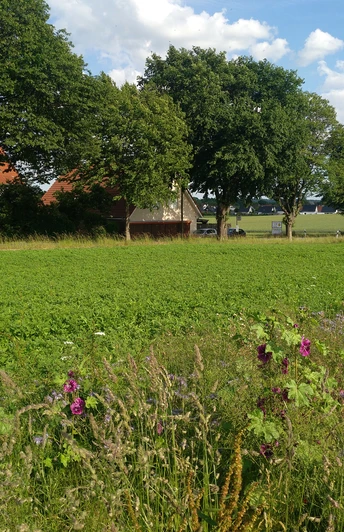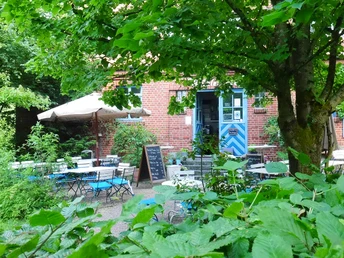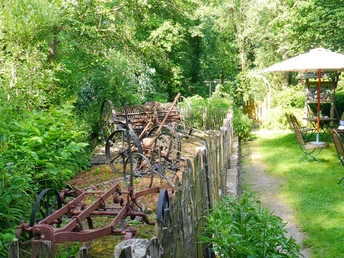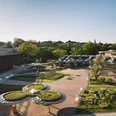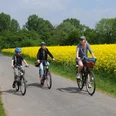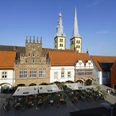- Photos & Map
How would you like to arrive?
- Call
- Description
- Good to know
- Nearby
Download GPX file
- 3:00 h
- 39.23 km
- 130 m
- 128 m
- 69 m
- 128 m
- 59 m
- Start: Salzhof with salt boiling monument and Pauline spring in the middle of Bad Salzuflen
- Destination: Salzhof with salt boiling monument and Pauline spring in the middle of Bad Salzuflen
The beet route runs through the fertile Lippe region and starts in Bad Salzuflen. On the 39 km long cycle route, you will discover the historic town of Salzsiederstadt and the vacation region of Bad Salzuflen, the Lippe estates where beet is still grown today. Worth seeing are the well-known LWL Museum Ziegelei Lage (near Holzhausen-Sylbach) and the sustainable environmental center Heerser Mühle, whose grounds are open all year round for environmental education and living close to nature.
Good to know
Best to visit
suitable
Depends on weather
Tour information
Cultural Interesting
Familiy-Friendly
Good Connection to public Transport
Labelling
Loop Road
Stop at an Inn
Suitable for Bike
Equipment
Wear cycling clothing that you feel comfortable in, depending on the weather.
Directions & Parking facilities
Coming from the A2 highway, take exit 31 - Vlotho-Exter, continue in the direction of Bad Salzuflen and follow the road in the direction of "Kurgebiet Obernberg".
The best way to get here is by bike. Alternatively, parking garages and large parking lots are available in Bad Salzuflen. All details are listed on the municipal website.
Stadtwerke Bad Salzuflen operates the quiet and environmentally friendly electric city buses. You can view the timetables here.
Additional information
Do you need a bike? Hire a comfortable bike from the Tourist Information to explore the surrounding area on two wheels.
More information
The beet route runs through the fertile Lippe region and starts in Bad Salzuflen. On the 39 km long cycle route, you will discover the historic town of Salzsiederstadt and the vacation region of Bad Salzuflen, the Lippe estates where beet is still grown today. Worth seeing are the well-known LWL Museum Ziegelei Lage (near Holzhausen-Sylbach) and the Heerser Mühle environmental center, whose grounds are open all year round for environmental education and nature-oriented living.
Author
K. Paar
Organization
License (master data)
Teutoburg Forest - Bad Salzuflen - Kerstin Paar
Author´s Tip / Recommendation of the author
The Rübenroute invites you to choose the regional and seasonal produce on offer at the weekly market for your home cooking. You can buy healthy and varied produce directly from the producer at the weekly market in Bad Salzuflen and Schötmar.
After an eventful cycle tour, relax in the VitaSol Therme spa with alternately warm baths and in the extensive SaunaPark.
After an eventful cycle tour, relax in the VitaSol Therme spa with alternately warm baths and in the extensive SaunaPark.
Safety guidelines
For your own safety and as a role model for children and fellow cyclists, we recommend wearing a bicycle helmet.
Social Media
Nearby
